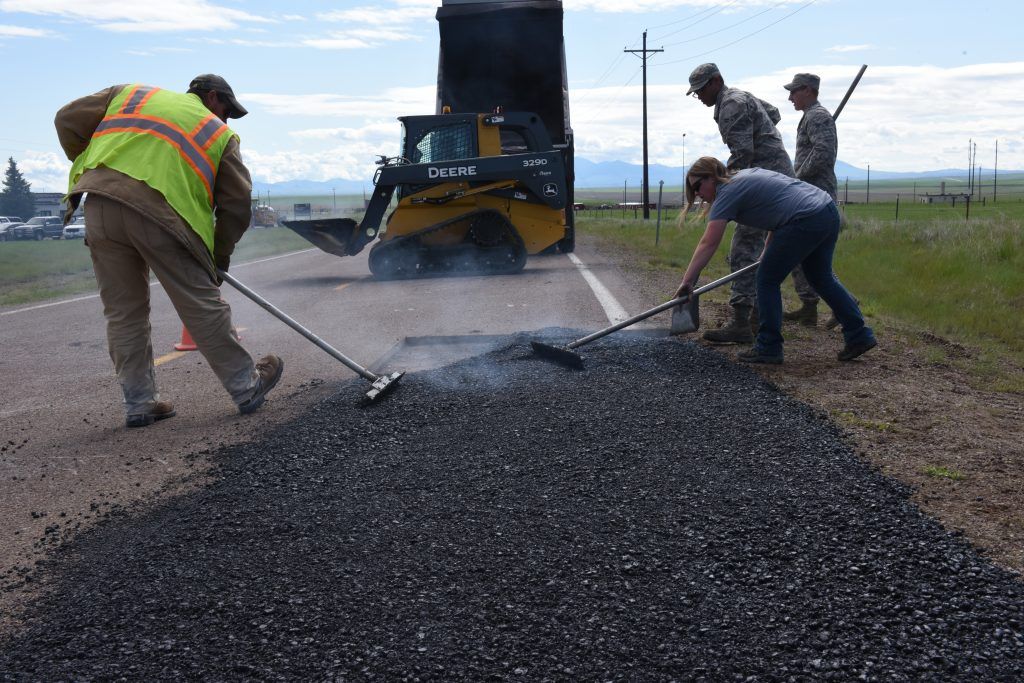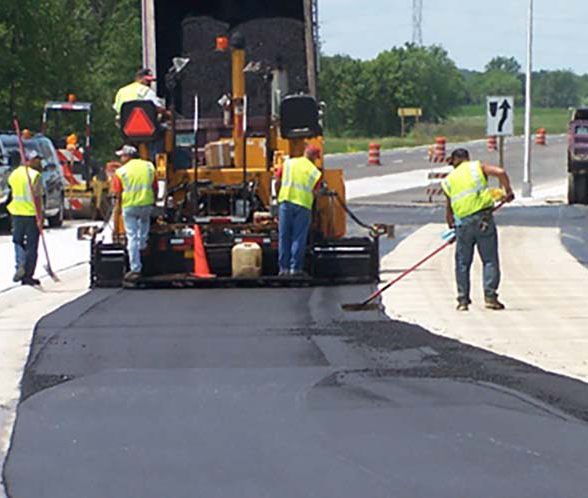Hot Mix Asphalt Paving: Elevating Commercial Parking Lot Specifications
Hot Mix Asphalt Paving: Elevating Commercial Parking Lot Specifications
Blog Article
Opening the Tricks of Warm Mix Asphalt Modern Technology
Exploring the midsts of hot mix asphalt technology reveals a world where thorough procedures and exact formulas converge to shape our roads and framework. The fusion of fillers, aggregates, and binders isn't just a building job however a tactical orchestration of resilience and performance.
Relevance of Hot Mix Asphalt
Warm Mix Asphalt plays a critical function in modern-day facilities growth because of its durability and cost-effectiveness. As one of the most frequently used leading product for roads, freeways, and car parking whole lots, Hot Mix Asphalt uses a variety of advantages that add to its relevance in construction jobs. One key advantage is its capability to withstand rush hour lots and rough weather condition problems, providing a lasting and trusted surface area for transportation networks. Furthermore, Hot Mix Asphalt is economical in both first construction and long-lasting maintenance, making it a recommended selection for many infrastructure jobs.
The resilience of Hot Mix Asphalt stems from its composition, that includes aggregates, binder, and filler products that are meticulously picked and blended to fulfill details performance requirements. This accurate combination causes a solid and adaptable pavement that can endure frequent use without substantial damage. Hot Mix Asphalt is 100% recyclable, more boosting its sustainability and ecological benefits. Overall, the relevance of Warm Mix Asphalt in facilities development can not be underrated, as it remains to be a keystone of modern-day building practices.
Components of Asphalt Mixes
The make-up of asphalt mixes is composed of meticulously selected aggregates, binder, and filler materials that are critical for achieving particular performance demands. Aggregates are the main part of asphalt blends, giving strength and stability. The binder, usually asphalt or asphalt concrete, holds the accumulations with each other and provides versatility and sturdiness to the mix.
The mix and percentage of these parts play a substantial duty in determining the quality and efficiency of the asphalt mix. Designers thoroughly develop the mix to satisfy certain demands, thinking about aspects like web traffic volume, climate conditions, and pavement lifespan. Appropriate selection and balancing of aggregates, binder, and fillers are essential for creating durable, durable asphalt sidewalks.
Combining and Production Strategies

As soon as the accumulations are picked, the binder, often asphalt cement, is included in bind the materials with each other. The binder's quality and amount significantly influence the mix's strength, flexibility, and resistance to environmental factors. Additionally, fillers like hydrated lime or Portland cement might be included to improve particular qualities of the asphalt mix, such as its workability or moisture resistance.
Throughout manufacturing, the accumulations and binder are warmed, generally between 250-325 ° F(121-163 useful reference ° C ), to promote blending and make sure proper covering of the accumulations. The blending procedure should be complete to achieve a homogeneous mix that promotes the desired efficiency characteristics of the asphalt. Numerous strategies, such as batch mixing or drum blending, are employed to attain consistent and premium asphalt mixes for construction jobs.
Variables Affecting Asphalt Efficiency
Factors affecting asphalt efficiency encompass a range of variables that influence the durability, durability, and general high quality of asphalt pavements. One crucial factor is the high quality of materials utilized in the asphalt mix. The kind and source of accumulations, the binder quality, and the ingredients all play a significant function in determining the efficiency of the asphalt sidewalk. The gradation of accumulations is essential as it affects the mix's security, resistance, and workability to splitting and rutting.

Environmental problems also affect asphalt performance. Temperature level variations, wetness seepage, and traffic lots can all impact the architectural integrity of the pavement. Style factors to consider, such as pavement density and drainage, are necessary in guaranteeing the lasting efficiency of the asphalt pavement. By very carefully considering these designers, factors and specialists can enhance asphalt efficiency and boost the service life of pavements.
Lasting Practices in Asphalt Modern Technology

Additionally, the development of warm-mix asphalt (WMA) technologies has obtained grip in recent times. WMA enables the production and positioning of asphalt blends at lower temperatures contrasted to standard hot-mix asphalt, leading to reduced power usage and greenhouse gas emissions. The usage of porous asphalt blends can assist mitigate stormwater overflow issues by permitting water to infiltrate via the pavement and right into the ground, promoting all-natural water filtering and reenergize processes. By implementing these sustainable practices, the asphalt sector can contribute to building an extra eco-friendly and resilient infrastructure network.
Conclusion
In verdict, warm mix asphalt modern technology plays a vital duty in modern-day infrastructure advancement as a result of its durability and cost-effectiveness. By thoroughly balancing elements, utilizing appropriate mixing methods, and thinking about different aspects, engineers can develop top quality asphalt mixes that endure heavy traffic loads and harsh weather. Accepting sustainable practices, such as using warm-mix modern technologies and recycled products, even more improves the environmental kindness of asphalt modern technology.
Mixing and production strategies in warm additional reading mix asphalt innovation involve the precise mix and processing of aggregates, binder, and fillers to develop a sturdy and high-performance asphalt mix.Aspects influencing asphalt efficiency include a range of variables that impact the longevity, durability, and overall top quality of asphalt pavements. Sustainable techniques in asphalt technology incorporate different initiatives intended at decreasing the ecological effect of asphalt production and paving procedures. By incorporating redeemed asphalt pavement (RAP) and recycled asphalt tiles (RAS) into brand-new asphalt mixes, the sector can substantially decrease the intake of raw materials and power, while also lowering landfill waste.
WMA permits for the production and positioning of asphalt blends at lower temperature levels compared to standard hot-mix asphalt, resulting in reduced energy intake and greenhouse gas emissions.
Report this page